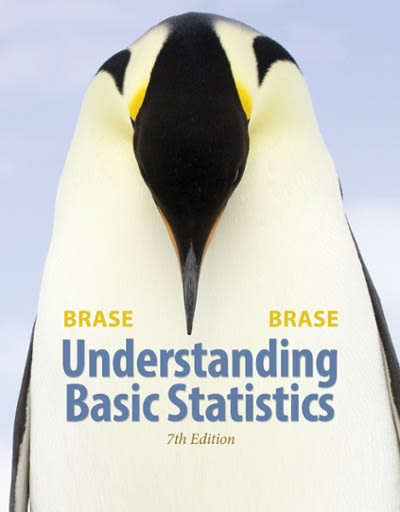Expand Your Knowledge: Stratifi ed Sampling, No Preliminary Study, Police Identifi cation Police are tested for their
Question:
Expand Your Knowledge: Stratifi ed Sampling, No Preliminary Study, Police Identifi cation Police are tested for their ability to correctly recognize and identify a suspect based on a witness or victim’s verbal description of the suspect. Scores on the identifi cation test range from 0 to 100 (perfect score).
Three cities in Massachusetts are under study. The mean score for all police in the three cities is requested. However, funding will only permit m 5 150 police to be tested. There is no preliminary study to estimate sample standard deviation of scores in each city. City A has N1 5 183 police, City B has N2 5 371 police, and City C has N3 5 255 police.
If we have no preliminary study for sample standard deviations, we can use a method called proportional sampling (also called representative sampling).
The sample size n1 for each stratum (city police department) is given by![]()
In most cases ni is not a whole number so we round to the nearest whole number.
Remember our total sample size is m 5 n1 + n2 +n3.
(a) Use the method of proportional sampling to compute n1, n2, and n3, the size of the random sample to be taken from each of the three cities. Round each ni to the nearest whole number and make sure m 5 n1 1 n2 1 n3.
(b) Suppose you actually conducted the specifi ed number of tests in each city and obtained the following result: x1 5 96 is the mean test score from city A, x2 5 85 is the mean test score from City B, and x3 5 88 is the mean test score from City C. Use the weighted average![]()
to get your best estimate for the population mean test score of all police in all three cities.
COMMENT: Estimates for m are usually better if we have a preliminary study with reasonably accurate estimates for the sample standard deviation si of each stratum (see Problem 28 and 29). However, in the case where there is no preliminary study we can use proportional sampling and still obtain good results.
Step by Step Answer:

Understanding Basic Statistics
ISBN: 9781305548893
7th Edition
Authors: Charles Henry Brase, Corrinne Pellillo Brase





